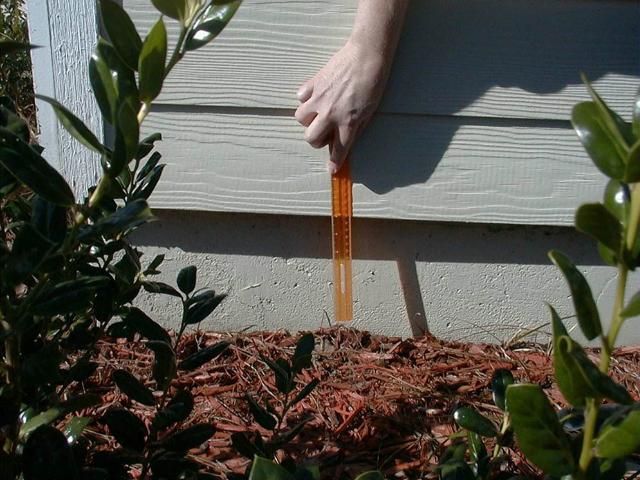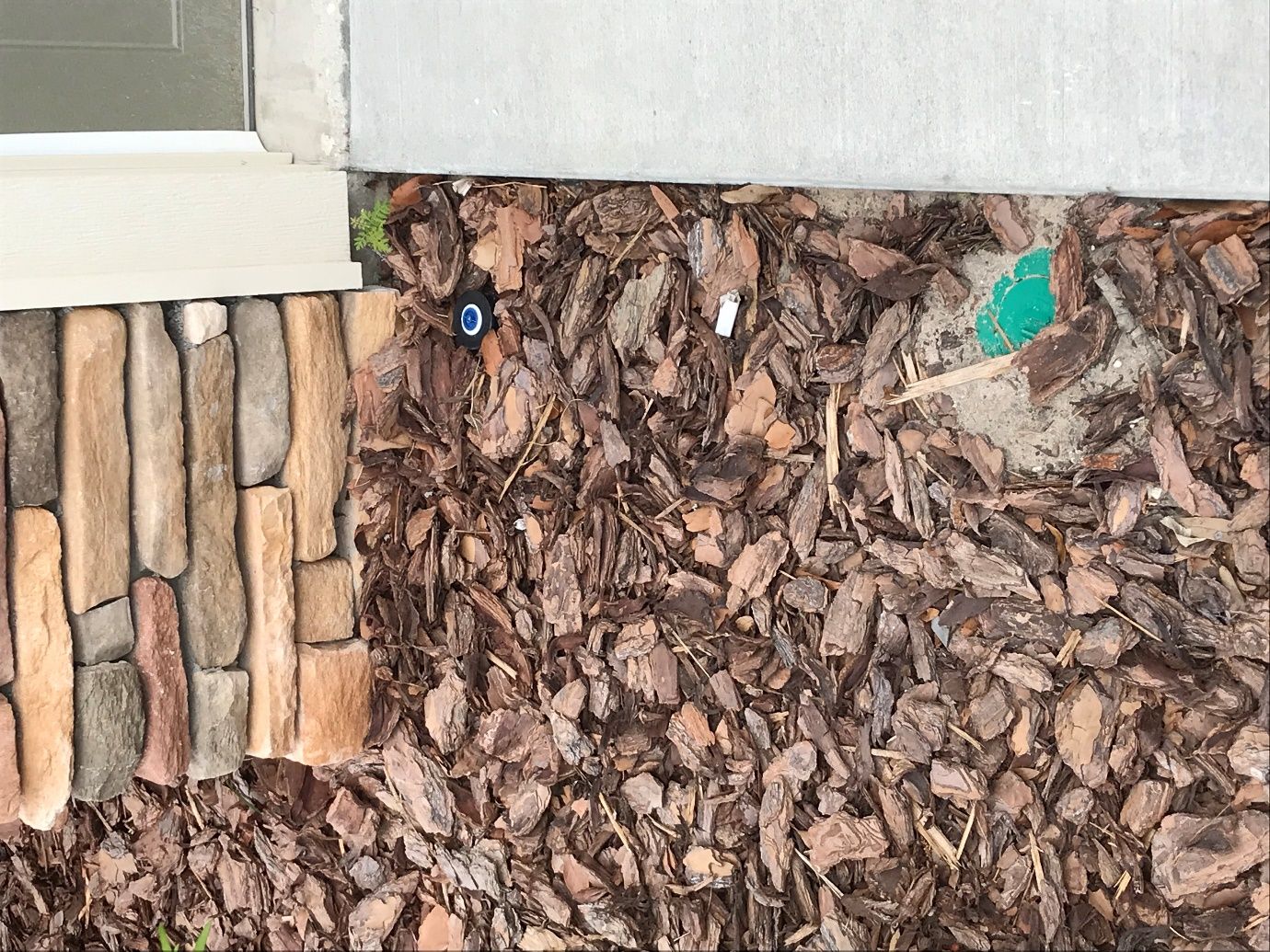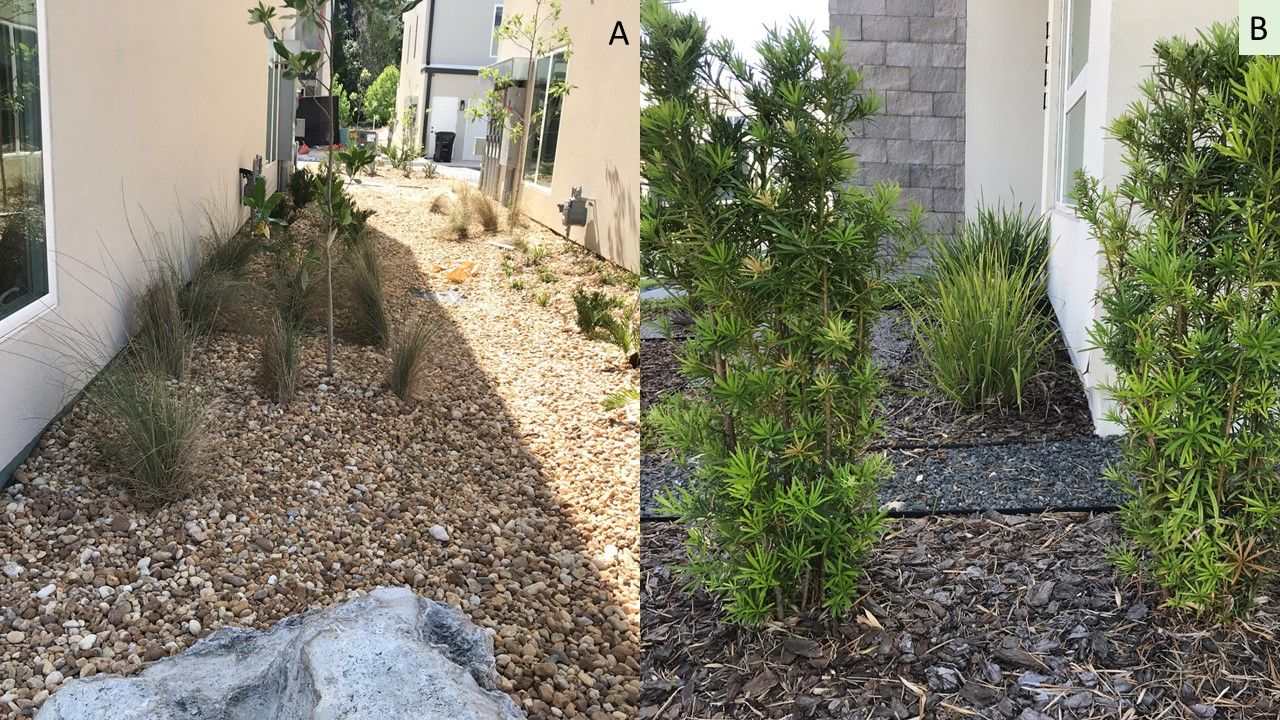Can subterranean termites spread via bags of landscape mulch? In our opinion, the greater risk to structures is from termites already established on your property as opposed to any termite stragglers that may be brought in on bags of mulch. Termites can be found in mulch, but their survival is poor and here is why: the ability of termites to survive the chipping process to create mulch is not good; additionally, once separated from the colony, their ability to survive further decreases. Finally, even when termites are found in mulch, mulch-fed termites suffer significantly lower survivorship (Long et al. 2001).
In terms of spreading invasive species like the Formosan subterranean termite, the greater problem is associated with the transport of large chunks of wood containing enough termites to sustain reproductive forms. For example, infested railroad ties used in landscape or salvaged timbers from razed structures are known to be associated with the spread of the Formosan subterranean termite (Forschler et al. 2000).
Mulch is useful in keeping mud from splashing up against a house. If mulch is part of your landscape, we recommend a thin layer (<2 inches) of mulch be placed within 12 inches of the foundation to allow the soil beneath to naturally dry. Desiccation is the termites’ worst enemy. Also avoid watering next to foundation walls and maintain about a 6” inspection space so that subterranean termites can be seen, if they attempt to enter your home (Figure 1).

Credit: F. Oi, UF/IFAS
Mulch laid too thickly (>4–6 inches) may obscure the inspection space around the outside foundation wall and can increases the ability of termites to survive where they are already established by keeping the soil moist and temperatures moderate (Figure 2).

Credit: F. Oi, UF/IFAS
What about inorganic ground covers? Inorganic ground covers can be used to create beautiful landscape designs, particularly in xeriscapes (Figure 3). However, subterranean termites consumed more cardboard in stations under inorganic ground covers (pea gravel) compared with organic mulches (shredded hardwood bark, miniature pine bark nuggets, shredded eucalyptus bark) (Long et al. 2001). Thus, it is important to maintain termite protection measures for your house. Protection measures most commonly include soil treatments, bait systems, or wood protection measures. (Remember to use a licensed and reputable pest control company (Oi et al. 2023)). Also, avoid wood to ground contact, including storing mulch off the ground. See Termite Prevention and Control (Oi et al. 2020).

Credit: F. Oi, UF/IFAS
References Cited
Long, C. E., B. L. Thorne, N. L. Breisch, and L. W. Douglas. 2001. "The effect of organic and inorganic landscape mulches on subterranean termite foraging activity." Environmental Entomology 30(5): 832–836. https://doi.org/10.1603/0046-225X-30.5.832
Forschler, B. T., J. Harron, and T. M. Jenkins. 2000. "Case histories involving the Formosan subterranean termite in Atlanta, Georgia, USA (Isoptera: Rhinotermitidae)." Sociobiology 36: 1–11.
Oi, F., N. Nelson, S. M. Ellis, J. M. Diaz, J. Davis, J. Corbus, and R. A. Cantrell. 2023. Homeowner’s guide to selecting a pest control service. EDIS ENY-2043. https://edis.ifas.ufl.edu/publication/IN1269
Oi, F., N. Nelson, J. B. McConnell, J. Davis, J. Corbus, and M. Atkinson. 2020. Termite prevention and control. EDIS ENY-2044. https://edis.ifas.ufl.edu/publication/IN1277